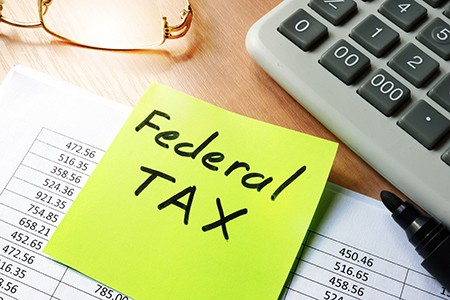Getting the 30% federal solar tax credit might be easier than you think.

We will cover the Investment Tax Credit (ITC), along with the investment tax credit form you have to fill out. You can calculate your income, expenditures, and credits to see if you qualify.
We will go into depth on filling out the IRS 5695 Form, providing step-by-step instructions. This includes how to transfer the totals to your IRS 1040 Form, saving you time every tax year. These Form 5695 Instructions can answer most of your questions concerning the tax credit deduction for solar panel investment.
Homeowners Investing in Solar Energy Equipment
The United States Federal Government benefits when any homeowner or business owner upgrades to renewable energy. That’s why solar industry leaders put so much energy into this solar tax credit. The final goal is to increase renewable energy used to reduce dependence on foreign oil. Solar panels can also lower the energy bills of solar customers who install qualified energy efficiency improvements.

Local power plants will write solar power contracts with homeowners who become power producers. The purchasing power definition is based on these solar power contracts.
The purchasing power definition will include the utility’s calculation of your home energy usage. It subtracts any power that you generate and will only charge you the difference (if your home energy use is higher than your power generation). This is also known as net metering.
The Federal Government will pay incentives, such as the 30% solar energy tax credit, to help property owners become energy producers. And then, the utilities can count on these local homeowners and don’t need to build as many power plants.
What Is Investment Tax Credit?
First of all, the Solar ITC (Investment Tax Credit) can be used by residential or commercial property owners. In many ways, it sounds too good to be true, but it is real. If you qualify, you get 30% off your taxable income amount.

Secondly, those with a high tax liability owning large properties that receive lots of sunshine can enjoy the greatest benefits from this tax credit. The tax incentive only applies to actual expenses paid and actual taxes that you owe. Solar energy has a system called “net metering,” which means you only pay for what you use. Therefore, those paying a large property tax can expect to benefit from a clean, efficient use of their property’s energy.
Types of Solar Panels
There are many types of solar panels from which to choose. Some are better for areas with plentiful sunshine. Others might be better for more shaded urban environments.
Price differences are another defining feature of the different solar panel types. Some might be more sensitive to higher or lower temperatures.
These are some of the solar panel types on the market:
- Monocrystalline
- Polycrystalline
- Thin Film
- Concentrate PV Cell
- Amorphous Silicon
- Biohybrid
- Cadmium Telluride
Both the Monocrystalline and Polycrystalline types are part of the first generation of solar panels. They are cheaper but have a 15% lower efficiency.
The second generation of solar panels includes Thin Film Solar Cells. These are affordable, but tend to be larger. Large properties might benefit by using the thin film solar cells.
The Biohybrid and Cadmium Telluride Solar Panels are still in the research and development phase. They try to emulate the natural photosynthesis process. Vanderbilt University is developing these advanced solar panels uses, which include organic or inorganic material.
What Is the Investment Tax Credit?
First of all, the Investment Tax Credit can be used by residential or commercial property owners. In many ways, it sounds too good to be true, but it is real. If you qualify, you get 30% off your taxable income amount.
Secondly, those with a high tax liability owning large properties receiving a lot of sunshine, can enjoy the most benefits from this tax credit. The credit only appertains to actual expenses paid and actual taxes that you owe.
Who Qualifies for Credit?
Those who have a tax liability that is higher than the credit can qualify. Most people who spent money installing a solar panel system for electricity or heating purposes will be eligible. Thankfully, the tax credit is very flexible.
Step by Step Instructions for Filling Out Form 5695
IRS Form 5695 – “Residential Energy Credits” enables those who’ve invested in solar, wind, or other types of renewable energy to calculate their tax deductions. The more renewable energy used, the better for the entire country. First, you need to find the lines for solar energy on the form.

Look at Part I of the “Residential Energy Efficient Property Credit” on IRS Form 5695 – lines 1 and 2. Fill in Line 1 with your “Qualified Solar Electric Property Costs.” These costs include labor, assembly, installation, and so forth when your solar equipment generates electricity. The home does not need to be your primary residence.
Or, if you have invested in solar water heating equipment or a geothermal heat pump, then you should fill out Line 2 – “Qualified Solar Water Heating Property Costs.” Add the lines together. Then, on Line 6, you will take 30% of said line and enter that on Line 13.
The federal solar tax credit applies to “Taxes Owed.” Therefore, you can only deduct it from taxes, which you must pay. Next, you need to fill out the credit limit worksheet to calculate your total tax liability.
If you find that the credit limit worksheet shows a total tax liability higher than the 30% federal tax credit, you can claim the credit. At this stage, you will calculate your “Limitation Based on Tax Liability” and place that number on Line 15.
Once you have those numbers figured out, you will take the Line 15 amount on Form 5695 and enter it on Line 53 – “Residential Energy Credits” of Form 1040. You will also be required to attach Form 5695 to your taxes. These credits are deducted from your taxable income amount.
A solar tax credit is non-taxable income. Since they are from the government, they will be treated as non-taxable income.
Average Credit Savings
The EnergySage Solar Marketplace calculated that homeowners and business owners spent about $18,300 installing solar panels. Due to the federal tax credit, both homeowners and business owners saved an average of $5,000 on their solar investment. That can be a significant incentive to go solar.
Homeowners can save even more by entering into a power purchase agreement (PPA), which enables them to enter into a saving agreement with their solar installer. For more about Purchase Agreements, check out our guide.
Making Solar Pay
Governments pay incentives to help the public move towards the desired goal, such as sustainable energy. There is no reason why you wouldn’t want to accept this great 30% tax benefit.
Filling out the investment tax credit form can take some time. You need to get all of your forms, expense documents, and instructions together in one place.
Investing in solar’s federal tax credit can be a great windfall, making your renewable energy investment worthwhile. It helps you defray the costs until you recover all of your investment money from having lower energy bills.
Now you can decide if the qualifying expenses of solar incentives are worth the deduction on your expenses next tax year. There are even state-based tax incentives for solar power. Check out our helpful guide on the most popular solar states here.
This tax return won’t alter your gross income since it’s a refundable credit on an entirely separate IRS tax form. But while this solar incentive is not an income tax return, it’s still a significant credit to those filing a separate tax return or a joint return.
The only type of taxpayer who might not benefit from a solar tax credit amount would be a student whose principal residence is temporary, meaning it is not a viable source of solar upgrades. Regardless of your filing status or income tax status, your household income can benefit from solar energy’s generous, flexible tax credit.
